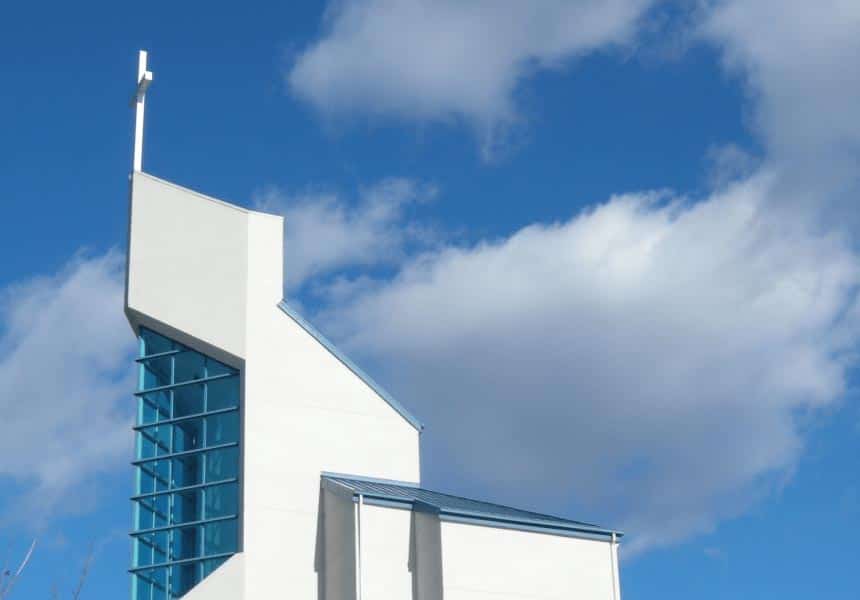One person dies every two days in the UK due to fires in buildings, and in many cases, the difference between survival and tragedy comes down to a single element: the doors.
Take the 2017 Grenfell Tower incident, where fire doors in some flats held back flames and smoke for over an hour, giving residents precious time to escape while neighbouring units without proper fire-rated doors were quickly overcome. That stark contrast demonstrates exactly why you can’t afford to treat door selection as an afterthought.
Here’s what might surprise you: while a standard door costs £100-£250, fire doors run £500-£1,300 installed. That price difference often leads to costly shortcuts, but understanding why fire doors cost 6-8 times more could save lives in your next project.
As a building professional, you’re responsible for decisions that directly impact occupant safety. Fire doors now require mandatory third-party certification, and you must install them in critical areas of buildings over 11 metres, including stairwells, corridors, and flat entrance doors.
The inspection requirements alone tell the story: quarterly checks for common areas and annual inspections for flat entrance doors. Compare that to standard doors, which have no safety inspection requirements whatsoever.
Whether you’re an architect specifying materials, a contractor installing doors, or a building manager maintaining fire safety, understanding the fundamental differences between fire doors and standard doors isn’t just about compliance – it’s about the people who will depend on your expertise when seconds matter most.
The question isn’t whether you can afford proper fire doors; it’s whether you can afford not to install them.
Understanding Fire Door Classification
A fire-rated door is specifically engineered and tested to resist fire and smoke for a predetermined period, providing crucial protection during emergencies. According to BS 8214, fire doors are defined as “doors intended to resist the passage of fire and/or gaseous products of combustion and are designed to close an opening in a fire-resisting wall.”
Fire door ratings use the FD classification system, where the number indicates resistance time in minutes. Common ratings include FD30 (30 minutes), FD60 (60 minutes), and FD120 (120 minutes). These doors undergo rigorous testing under BS 476 parts 22 and 31.1 to earn their certification.
Since 2024, all fire doors require third-party certification, ensuring independent verification of their fire resistance capabilities. This certification process validates that doors meet strict performance standards for compartmentation and escape route protection.
Fire Doors vs Standard Doors: Key Differences
| Characteristic | Fire Doors | Standard Doors |
| Purpose | Fire resistance and smoke control for safety | Basic privacy and security |
| Core Materials | Solid timber or steel with intumescent seals | Hollow core or basic timber construction |
| Certification Requirements | Mandatory third-party certification under BS standards | No fire safety certification required |
Intumescent seals are critical components that expand when heated, sealing gaps around the door frame to prevent smoke and fire penetration. These specialized materials, combined with robust core construction, enable fire doors to maintain their integrity under extreme temperatures.
You’ll typically find fire doors in escape routes, stairwells, and areas requiring fire compartmentation. Understanding these specifications ensures you select appropriate fire doors that comply with building regulations and protect occupants effectively during emergencies.
Construction Differences That Matter
Fire doors differ dramatically from standard doors in several critical construction elements that directly impact their protective capabilities.
Thickness and Weight Specifications
You’ll immediately notice the substantial difference in door thickness. Fire doors range from 44-54mm thick, while standard doors typically measure 35-40mm. An FD30 fire door (30-minute fire resistance) measures exactly 44mm thick and weighs approximately 37kg. For extended protection, FD60 doors increase to 54mm thickness and exceed 50kg in weight. In comparison, your standard residential or commercial doors weigh only 15-25kg.
Core Construction Materials
Fire doors feature dense, fire-resistant core materials such as mineral fiber, vermiculite, or specialized fire-rated particleboard. These materials provide thermal insulation and structural integrity under extreme heat. Standard doors use hollow cores, solid wood, or lightweight composite materials that offer no fire resistance.
Intumescent Sealing Systems
You’ll find intumescent seals integrated into fire door frames and door edges. These specialized strips contain chemicals that expand dramatically when exposed to temperatures above 200°C, creating an airtight seal that prevents smoke and flame passage. Standard doors lack this critical safety feature entirely.
Hardware Requirements
Fire doors require certified fire-rated hinges, locks, and closing mechanisms. You must use at least three hinges rated for the door’s fire classification, compared to standard doors that typically use two standard hinges.
Frame Integration
Fire door frames are specifically engineered with rebates designed to accommodate intumescent seals and provide proper thermal barriers. The frame-to-door gap must maintain precise tolerances (typically 2-4mm) to ensure proper seal activation.
These construction differences represent the engineering required to achieve certified fire resistance ratings, making fire doors substantially more robust than standard doors.
Critical Installation Differences
Fire door installation demands absolute precision, unlike the flexible approach you can take with standard doors. Every component must meet strict certification requirements to maintain the door’s fire rating.
Fire-Rated Frames and Tolerances You must install fire doors within certified fire-rated frames manufactured to match the door’s rating. Gap tolerances are non-negotiable: maximum 3mm around the door perimeter and 10mm at the threshold. These precise measurements ensure proper seal activation during fire incidents.
Hardware Requirements Your fire door requires a minimum of three certified hinges for FD30 ratings, positioned at specific intervals. Each hinge must carry appropriate fire certification markings. You’ll also need certified locks, latches, and handles that won’t compromise the door’s integrity under fire conditions.
Sealing Systems Installation requires intumescent strips around the door frame that expand when exposed to heat, sealing gaps to prevent smoke and flame passage. Additionally, you must install smoke seals to meet building regulations, particularly in escape routes and compartment boundaries.
Self-Closing Mechanisms Every fire door requires a certified self-closing device, properly adjusted to ensure complete closure from any open position. The closing force must overcome air pressure differences while remaining manageable for users.
Contrast with Standard Doors Standard door installation offers significant flexibility in frame materials, gap tolerances, hardware selection, and closing mechanisms. You can adjust measurements, substitute components, and modify installation methods without regulatory concerns.
Fire door installation tolerates zero compromise. Each specification exists to preserve life safety performance, making professional installation and regular maintenance essential for compliance and occupant protection.
Hardware That Can Make or Break Compliance
When specifying fire door hardware, you’re dealing with strict regulatory requirements that directly impact building safety and legal compliance. Unlike standard doors where hardware selection is largely aesthetic, fire doors demand certified components that maintain the door’s fire rating.
Mandatory Fire Door Hardware Requirements:
For FD30 fire doors, you must install a minimum of three hinges, never fewer. Each hinge requires certification to match your door’s fire rating. Self-closing mechanisms are non-negotiable; spring hinges or overhead closers must automatically return the door to its closed position.
Intumescent strips are mandatory around the door perimeter. These strips expand when exposed to heat, sealing gaps to prevent fire spread. Similarly, smoke seals prevent toxic smoke infiltration during early fire stages.
All locks, latches, and handles must carry proper certification. You cannot substitute standard hardware, every component affects the door’s fire performance.
Fire Door vs. Standard Door Hardware Comparison:
Fire Doors (Mandatory):
- Minimum 3 certified hinges
- Certified locks/latches only
- Intumescent strips required
- Smoke seals mandatory
- Self-closing mechanism essential
- All hardware must match fire rating
Standard Doors (Optional):
- Any number of hinges
- Unlimited lock/latch choices
- No sealing requirements
- Manual closing acceptable
- Decorative hardware permitted
- Cost-driven selection possible
Compliance Impact:
Using non-certified hardware on fire doors instantly voids your fire rating, creating liability issues and code violations. You’ll face costly retrofitting during inspections and potential legal consequences if incidents occur.
Remember: fire door hardware isn’t just about functionality, it’s about maintaining life safety systems. Every component must work together to preserve the door’s protective capabilities when seconds matter most.
Investment Breakdown
When budgeting for fire doors, you need to understand the significant cost differences compared to standard doors. Here’s a comprehensive breakdown based on current UK market rates:
Cost Comparison Table
| Component | Fire Doors | Standard Doors |
| Door Supply | £250-£1,000 | £50-£100 |
| Installation | £245-£475 | £50-£100 |
| Total Installed Cost | £500-£1,300 | £50-£150 |
Detailed Fire Door Cost Components
Door Purchase (£250-£1,000)
- Basic 30-minute rated doors: £2
- 50-£400
- Premium 60-120 minute doors: £500-£1,000
- Specialized glazed fire doors: £600-£1,200
Installation Costs (£245-£475)
- Professional fitting: £200-£350
- Frame modification: £45-£125
- Hardware installation: £50-£100
Additional Costs
- Certification and testing: £50-£150
- Specialized hardware (hinges, locks, closers): £100-£300
- Annual maintenance: £25-£50 per door
Why Fire Doors Cost More
The substantial price difference reflects:
- Specialized materials: Fire-resistant timber, intumescent strips, and certified glazing
- Rigorous testing: Laboratory fire testing to British Standards
- Professional installation: Certified fitters ensuring proper gap tolerances and frame integrity
- Ongoing compliance: Regular maintenance and inspection requirements
For accurate project budgeting, factor in the complete lifecycle costs including maintenance, as fire door performance directly impacts building safety compliance and insurance requirements.
2025 Regulatory Updates
You need to be aware of significant regulatory changes that took effect in 2025, fundamentally altering how you approach fire door compliance and certification.
Key Changes Effective 2025:
- Mandatory Intumescent Seals and Smoke?Seal Verification – All fire doors must now be fitted with compliant intumescent seals and cold smoke seals. Inspectors must verify that seals expand correctly, fit flush and are not painted over, in line with updated BS and EN standards.
- Quarterly Inspections for High?Traffic & Public Buildings – For buildings such as hospitals, schools and shopping centres, inspection frequency has increased. Fire doors now require documented checks every quarter rather than annually.
- Certified Professional Installation Only – Fire door installation must now be carried out by certified technicians. Self?installations or non?certified installers are no longer acceptable .
- Upgraded Fire?Resistant Materials Requirements – Door cores, frames and glazing inserts must meet enhanced fire resistance criteria. Acceptable products must comply with revised BS 476?22 or BS/EN 1634?1 tests.
- Enhanced Documentation & Record Keeping – All fire door inspections, installations, seal integrity tests and certifier details must now be logged. Records must be retained, registered and available for audit as per the updated Regulatory Reform (Fire Safety) Order and associated Best Practice Guidance.
Immediate Action Required:
You should review all current fire door installations against these new standards. Ensure procurement of fire doors includes correct seals and that only certified professionals handle installation. Update inspection regimes to meet quarterly schedules where applicable, and strengthen your documentation processes to capture certification, seal condition checks, and inspection outcomes. Expect additional costs for certification, installation and inspection timeline changes. Non?compliance may lead to enforcement action, penalties, or project delays—adapting immediately is essential.
Final Take Away
The distinction between fire doors and standard doors extends far beyond cost considerations, it’s a matter of life and death. Fire doors provide critical fire resistance ratings, specialized hardware, and regulatory compliance that standard doors simply cannot deliver. While standard doors may cost significantly less upfront, fire doors offer irreplaceable protection during emergencies, containing smoke and flames to ensure safe evacuation routes.
You’ve learned that fire doors require specific construction materials, self-closing mechanisms, and regular maintenance to function effectively. These aren’t optional upgrades, they’re mandated safety systems that protect building occupants and your professional liability.


